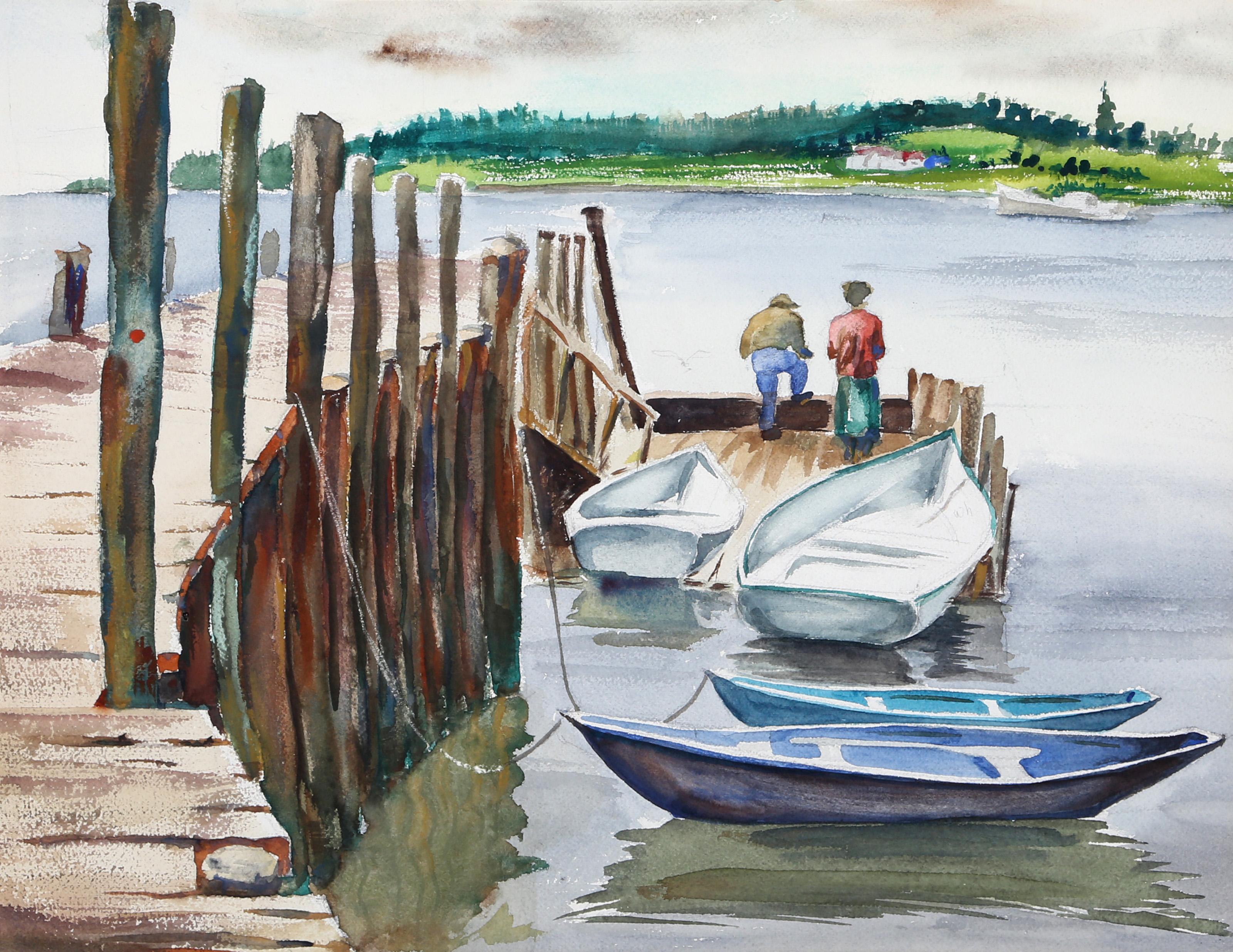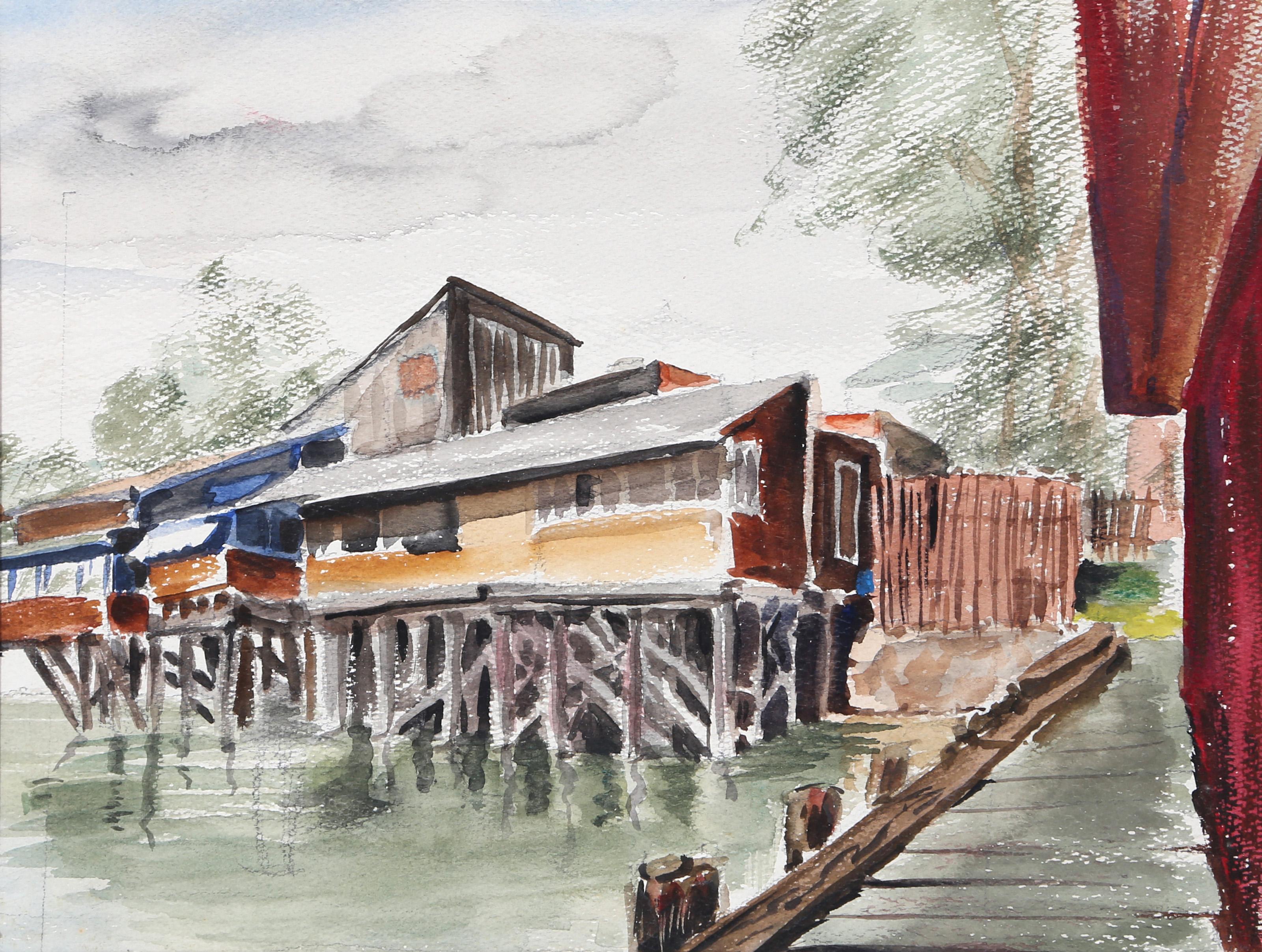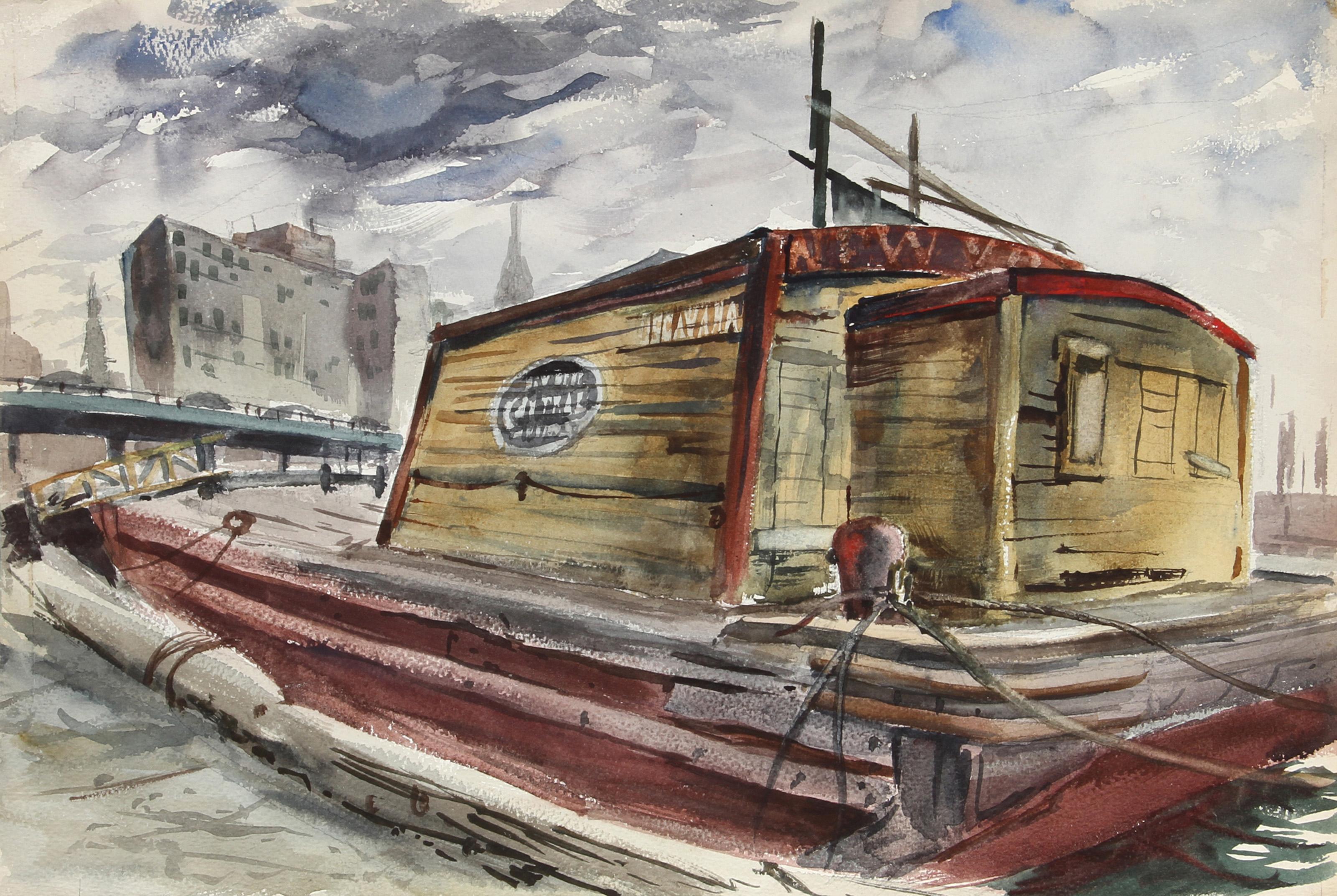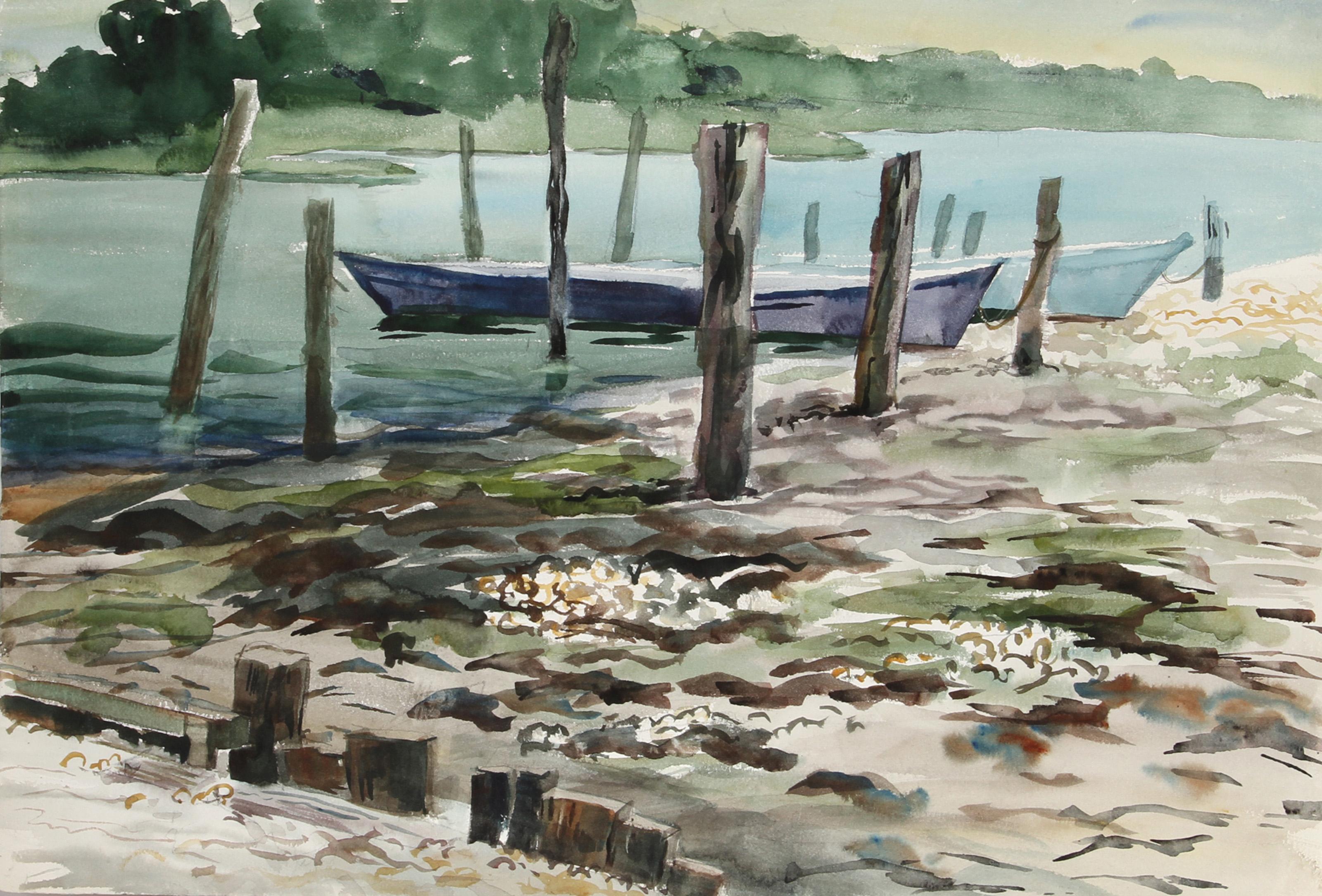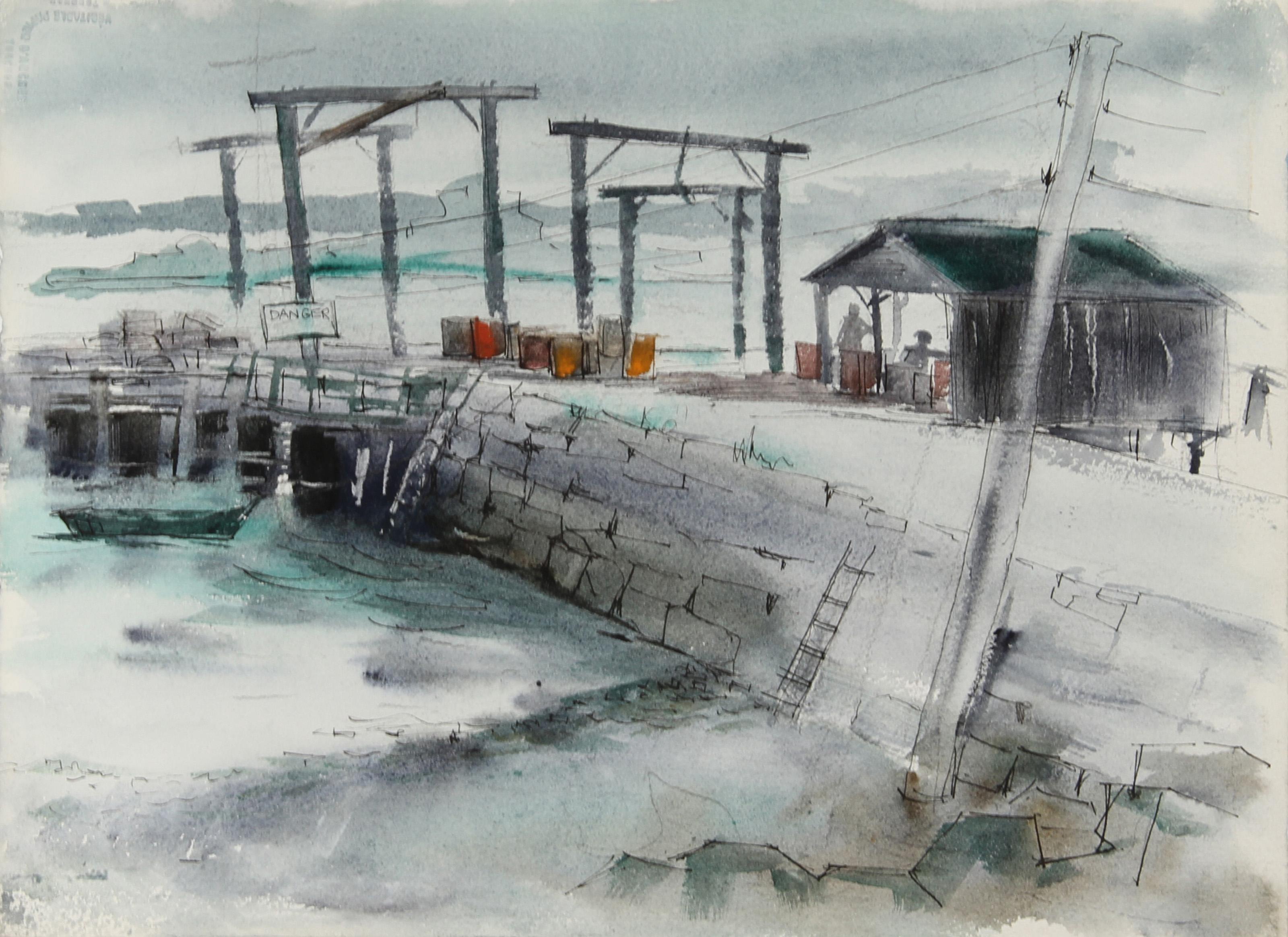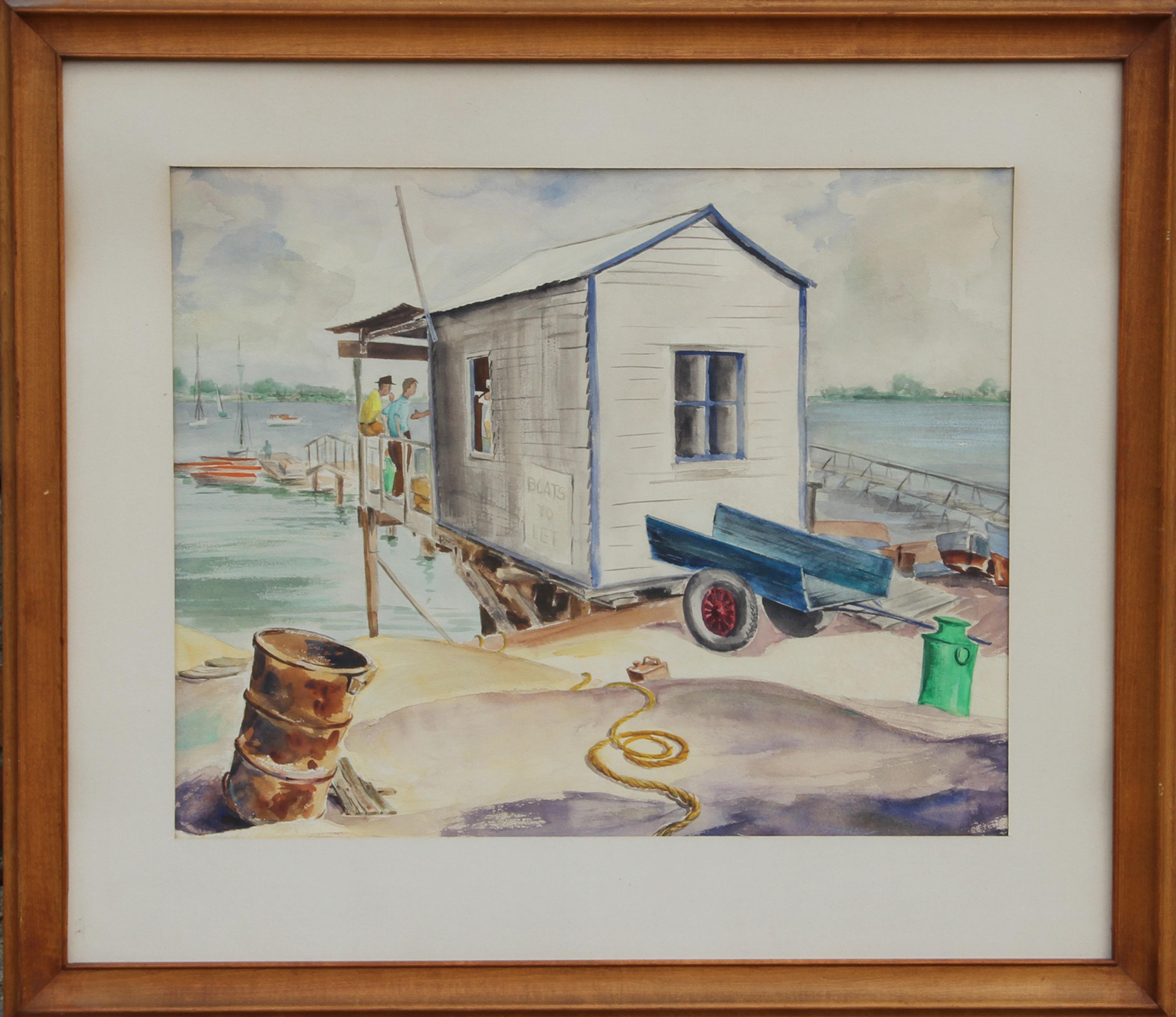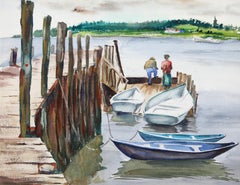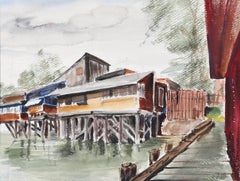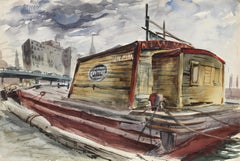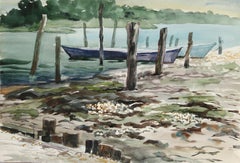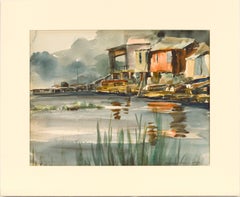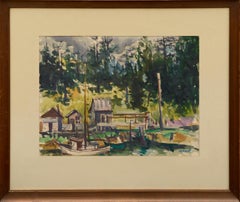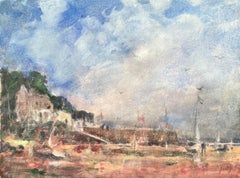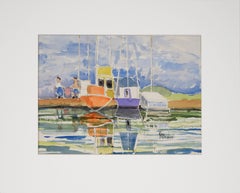Items Similar to View from Docks, Impressionist Watercolor by Eve Nethercott
Want more images or videos?
Request additional images or videos from the seller
1 of 2
Eve NethercottView from Docks, Impressionist Watercolor by Eve Nethercott1947
1947
$550
£417.26
€478.42
CA$783.51
A$850.30
CHF 447.39
MX$10,331.15
NOK 5,601.25
SEK 5,274.08
DKK 3,572.12
About the Item
Eve Nethercott, American (1925 - 2015) - View from Docks (P2.50), Year: 1947, Medium: Watercolor on Paper, Size: 7 x 9.5 in. (17.78 x 24.13 cm), Description: Eve Nethercott's rendering of a waterway leading to the ocean is representative of many coastal communities found in Maine and New England overall. Relying on perspective, the work looks out over the canal and along the docks mooring boats while eventually reaching the deep blue Atlantic Ocean.
- Creator:Eve Nethercott (1925 - 2015, American)
- Creation Year:1947
- Dimensions:Height: 7 in (17.78 cm)Width: 9.5 in (24.13 cm)
- Medium:
- Movement & Style:
- Period:
- Framing:Framing Options Available
- Condition:
- Gallery Location:Long Island City, NY
- Reference Number:Seller: RO570971stDibs: LU46615933242
About the Seller
4.9
Platinum Seller
Premium sellers with a 4.7+ rating and 24-hour response times
Established in 1979
1stDibs seller since 2014
3,121 sales on 1stDibs
Typical response time: 1 hour
- ShippingRetrieving quote...Shipping from: Long Island City, NY
- Return Policy
Authenticity Guarantee
In the unlikely event there’s an issue with an item’s authenticity, contact us within 1 year for a full refund. DetailsMoney-Back Guarantee
If your item is not as described, is damaged in transit, or does not arrive, contact us within 7 days for a full refund. Details24-Hour Cancellation
You have a 24-hour grace period in which to reconsider your purchase, with no questions asked.Vetted Professional Sellers
Our world-class sellers must adhere to strict standards for service and quality, maintaining the integrity of our listings.Price-Match Guarantee
If you find that a seller listed the same item for a lower price elsewhere, we’ll match it.Trusted Global Delivery
Our best-in-class carrier network provides specialized shipping options worldwide, including custom delivery.More From This Seller
View AllIsland Docks, Impressionist Watercolor by Eve Nethercott
By Eve Nethercott
Located in Long Island City, NY
Eve Nethercott, American (1925 - 2015) - Island Docks (P3.31), Year: 1952, Medium: Watercolor on Paper, Size: 14 x 18 in. (35.56 x 45.72 cm), Description: Eve Nethercott's wa...
Category
1950s Impressionist Landscape Drawings and Watercolors
Materials
Watercolor
View of House from Docks, Impressionist Watercolor by Eve Nethercott
By Eve Nethercott
Located in Long Island City, NY
Eve Nethercott, American (1925 - 2015) - View of House from Docks (P2.60), Year: 1948, Medium: Watercolor on Paper, Image Size: 10 x 13 inches, Size: 11 x 15 in. (27.94 x 38....
Category
1940s Impressionist Landscape Drawings and Watercolors
Materials
Watercolor
Waterfront, Impressionist Watercolor by Eve Nethercott
By Eve Nethercott
Located in Long Island City, NY
Eve Nethercott, American (1925 - 2015) - Waterfront (47), Year: 1959, Medium: Watercolor, Size: 15 in. x 22 in. (38.1 cm x 55.88 cm), Description: Viewed diagonally, the yellow...
Category
1950s Impressionist Landscape Drawings and Watercolors
Materials
Watercolor
River Side, Impressionist Watercolor by Eve Nethercott
By Eve Nethercott
Located in Long Island City, NY
Eve Nethercott, American (1925 - 2015) - River Side (57), Year: circa 1961, Medium: Watercolor, Size: 15 in. x 22 in. (38.1 cm x 55.88 cm), Description: Bobbing beside the moor...
Category
1960s Impressionist Landscape Drawings and Watercolors
Materials
Watercolor
Maine Dock and House, Impressionist Watercolor by Eve Nethercott
By Eve Nethercott
Located in Long Island City, NY
Eve Nethercott, American (1925 - 2015) - Maine Dock and House (37), Year: 1959, Medium: Double-Sided Watercolor, Size: 11 in. x 15 in. (27.94 cm x 38.1 cm), Description: This d...
Category
1950s Impressionist Landscape Drawings and Watercolors
Materials
Watercolor
Dock, Impressionist Watercolor by Eve Nethercott
By Eve Nethercott
Located in Long Island City, NY
Eve Nethercott, American (1925 - 2015) - Dock, Year: circa 1960, Medium: Watercolor, Size: 16 in. x 20 in. (40.64 cm x 50.8 cm), Description: Looking out over a boathouse on a ...
Category
1960s Impressionist Landscape Drawings and Watercolors
Materials
Watercolor
You May Also Like
Dock over Water Landscape
Located in Soquel, CA
Peaceful watercolor landscape of a small dock with colorful structures over calm waters by Daphne Williams (American, 20th Century). Signed "Daphne Williams" lower right. Presented i...
Category
Late 20th Century American Impressionist Landscape Drawings and Watercolors
Materials
Paper, Watercolor
$440 Sale Price
20% Off
Mid Century Watercolor Landscape -- Boats at the Dock
Located in Soquel, CA
Beautiful watercolor of boats next to a dock with tall trees in the background by Mike Strouth (American, 20th Century). Signed "Strouth" lower ri...
Category
1960s American Impressionist Landscape Drawings and Watercolors
Materials
Paper, Watercolor
$1,080 Sale Price
20% Off
French Impressionist Watercolor of Coastal Village Dock with Boats at Low Tide
Located in Cirencester, Gloucestershire
Title: French Impressionist Watercolor of Coastal Village Dock with Boats at Low Tide
By Maurice Mazeilie (French 1924-2021)
Medium: Watercolor on paper, unframed
Size: 7 x 9.5 inche...
Category
20th Century Impressionist Drawings and Watercolor Paintings
Materials
Watercolor
Boats Docked On The River - Original Watercolor on Paper
Located in Soquel, CA
Boats Docked On The River - Original Watercolor on Paper
Original watercolor on paper depicting boats parked along the water by Ken L. Stephens (American. ...
Category
20th Century American Impressionist Landscape Drawings and Watercolors
Materials
Paper, Watercolor
$920 Sale Price
20% Off
French Impressionist Watercolor of a Harbor Scene with Boats Moored on the Shore
Located in Cirencester, Gloucestershire
Title: French Impressionist Watercolor of a Harbor Scene with Boats Moored on the Shore
By Maurice Mazeilie (French 1924-2021)
Medium: Watercolor on paper, unframed
Size: 7 x 9.75 in...
Category
20th Century Impressionist Drawings and Watercolor Paintings
Materials
Watercolor
View Of The Port, Watercolor
Located in SAINT-OUEN-SUR-SEINE, FR
Port view.
Watercolor.
Mounted on cardboard.
19 x 28 cm.
Category
20th Century Landscape Drawings and Watercolors
Materials
Watercolor
